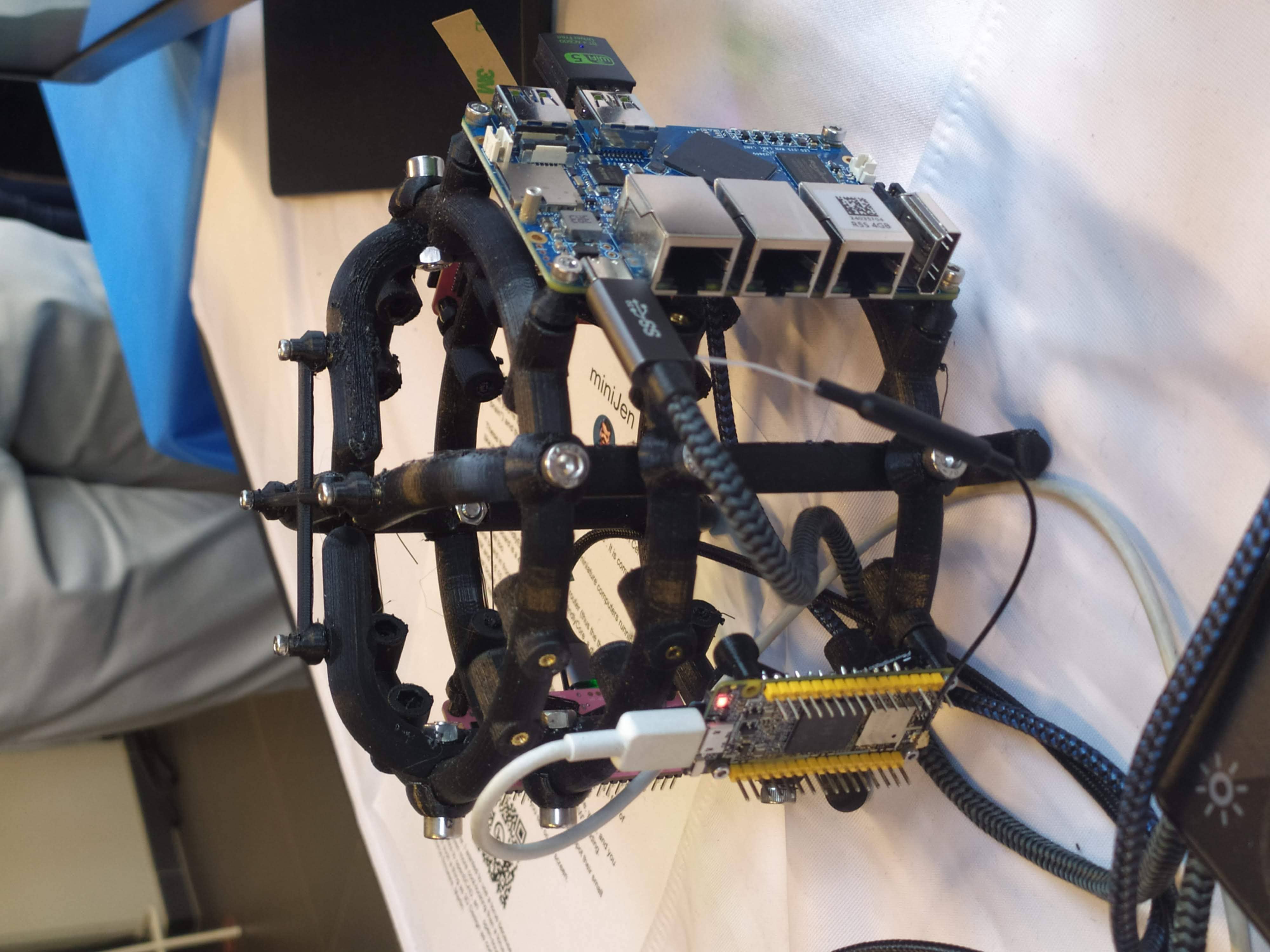miniJen live streams

Short Introduction
What is miniJen? It’s the Jenkins multi-cpu-architectures smallest instance known to this day.

It’s composed of a 4 arm Cortex-A55 cores RockChip controller (aarch64), a 4 arm Cortex-A7a cores AllWinner agent (armv7l), a 4 arm Cortex-A53 cores AllWinner agent (aarch64), and a single RV64GCV core AllWinner agent (RISC-V).
Live streams
From the idea to the real thing, it took me a few months.
During this period, I made a few live streams on my Jean Quinze YouTube channel, one unboxing video related to the project, and the same live streams were running on my Twitch channel too.
I started with an unboxing video of the boards I chose (MangoPi MQ-Pro, MangoPi MQ-Quad, FriendlyElec R5S, and FriendlyElec Duo2) to create a multi-arch Jenkins cluster/instance for FOSDEM.
I also showed the round displays I thought about using to display the Jenkins dashboard.
Then I also showed my first try at building harnesses for the boards.
In the next live stream, I talked about my attempts at designing a 3D structure to hold the boards and the displays thanks to OpenSCAD, and the printed result.
I also unboxed my Vision Five2 risc-v board which I won’t use for this project, and my Radxa Zero that I will use for another project.
In the following video, I showed a few more parts I printed (like the feet) and screwed a few boards on the first torus.
I also talked about the use of inserts instead of directly tapping the PLA.
I then spent some time on the 3D design of miniJen thanks to OpenSCAD.
I then unboxed my Pine64 PinePower that will help power up those four SBCs.
I then installed armbian on the risc-v board.
In the next video, I reinstalled Linux on the MangoPi MQ-Pro board, OpenJDK17, Temurin OpenJDK19 and 20, and installed a Jenkins agent on it.
Later on, I connected it to the controller. To finish, I ran a very simple first risc-v job.
In the next video, I installed another torus on miniJen, and later on installed Linux and a Jenkins controller on the FriendlyElec R5s.
I started by installing OpenJDK17, then a weekly release of Jenkins.
In the last video to this day, just before FOSDEM, I showed that the 3d-printing part was mostly over.
I imported jobs from another Jenkins controller.
I said a word about the Pine64 PinePower, the MangoPi boards, and the FriendlyElec boards.
I also detailed the various SBCs I use (aarch64, armv7, risc-v ).
I then installed what was missing on each board to get a Jenkins agent working (java, …), linked the boards altogether within Jenkins, and then got them to execute their first job.
In the end, I had a working Jenkins controller and 3 Jenkins agents, all running on different CPU architectures, all of that ready for FOSDEM.